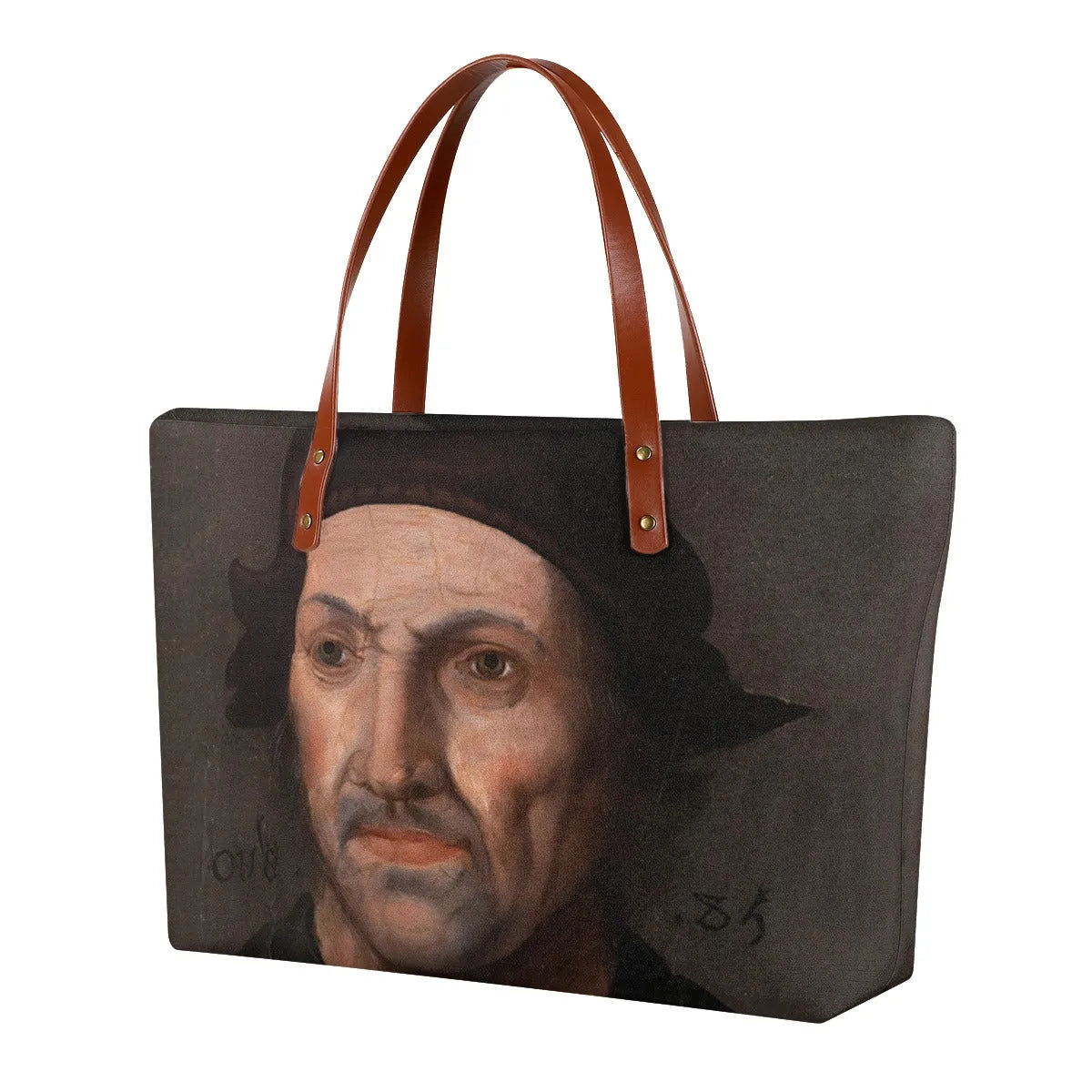



Hieronymus Bosch Portrait Tote Bag
Effortlessly merge art and fashion with our Hieronymus Bosch Portrait Tote Bag. Whether you're strolling through an art gallery, heading to a casual brunch, or conquering your daily tasks, this tote is the perfect companion. Its spacious interior accommodates your essentials with ease, while the sturdy straps ensure comfortable carrying. Elevate your style while expressing your unique personality and appreciation for art – a true testament to your refined taste.
Dive into the captivating world of Hieronymus Bosch with our exquisite Portrait Tote Bag. Immerse yourself in the intricate details of Bosch's iconic masterpiece, expertly recreated on a durable canvas tote. Each stitch brings to life the enigmatic characters, fantastical creatures, and rich symbolism that have made Bosch's work a timeless masterpiece. Carry a piece of art with you wherever you go, sparking conversations and inspiring those around you.
- Made of Diving Cloth
- Waterproof Fabric
- Large capacity
- Black zipper and Lining
- Brown strap
- Double-sided Famous Painting Art
Discover the surreal and enigmatic world of Hieronymus Bosch, one of the most celebrated artists of the Renaissance period. Here are more of Hieronymus Bosch's Famous Paintings.
About the artwork
We are aiming to have your order dispatched from our facility within 48 hours. However, please bear with us in case we are spending extra time in checking / perfecting your items, particularly during the peak season around end of the year. This does not include weekends or holidays.
Purchases made after 6pm PT will not be shipped out until the next business day. If you order after 6pm PT on a friday, your order will likely be shipped out on the following monday. For more information click here.
We provide a return policy, allowing customers to return products within a specified timeframe if they are not completely satisfied. For more information click here.
We offer a range of secure payment methods, including major credit cards and debit cards such as Mastercard, Visa, and American Express. Additionally, we support digital wallets like Apple Pay and allow for seamless transactions through trusted platforms like PayPal. For more information click here.
Choose options




20% Off Everything - Limited time only.
Enjoy Free Shipping on All Orders!
